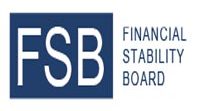The Financial Stability Board published their first annual report for the January 2013 to March 2014 period, making the whole thing pretty dated. The contents read like a hit parade of major topics for securities finance market participants not to mention Securities Finance Monitor. The new information came in the financials section: how much money is the FSB taking in and spending to turn their regulatory analyses into concrete proposals for national regulators?
While far-off global regulators seem untouchable, the reality is that people have to get paid to do the work on the ground. The FSB reports that it took in CHF12,285,000 from its date of incorporation, January 28, 2013, through March 31, 2014. This is about US$13.8 million as of early 2014. Here’s the expense breakdown:
Statement of activities
For the period from 28 January 2013 (date of incorporation) to 31 March 2014 CHF thousands
2014
CHF ‘000
Management and staff expenses
- Basic salary and allowances: 7,867
- Charges under pension scheme: 2,159
- Health and accident insurance: 479
- Other personnel expenses: 277
Administration expenses
- Staff travel: 1,116
- Other administration expenses: 362
- Audit fee: 25 (Ernst & Young)
The FSB does not contract its employees directly. Rather, the Bank for International Settlements (BIS), which hosts the FSB, is the contracting agent. The BIS also provides a variety of administrative services that are effective free, or at least not recorded a a direct expenses in the FSB’s statement of operations. Most FSB employees are actually seconded from national regulators. There is also a Chairman of the FSB who receives no salary.
Who is putting up the money? “At present, the FSB membership consists of the ministries of finance, central banks and supervisory and regulatory authorities from 24 jurisdictions and 12 institutional members, comprising international financial institutions, international standard-setting bodies, regulatory, supervisory and central bank bodies (“Members”).” Under the hood, taxpayers are paying the bill. Contributions to the FSB go to the Bank for International Settlements and are earmarked for the FSB.
From a relative standpoint the budget and expenses of the FSB are quite small. The US Securities and Exchange Commission spent US$1.44 billion in its program costs for FY2014, according to the SEC’s 2014 Agency Financial Report. The SEC earned US$825 million in disgorgements and penalties. Since the FSB doesn’t regulate any institution directly it is not possible for it to generate fees based on fines, but the comparison with a larger regulatory institution in worth noting. The FSB is managing a lot of output and global coordination on a relatively small budget, as these things go.
A link to the FSB’s annual report is here.


